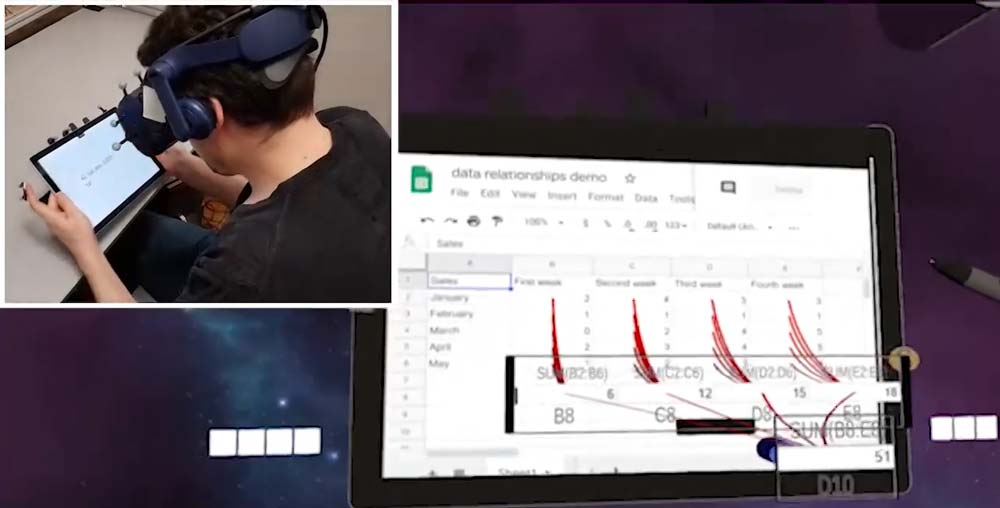Researchers Demonstrate Possibility of Visualization of Microsoft Excel in 3D VR
Did you know that it is possible to usefully expand Spreadsheet applications like Google Sheets and Microsoft Excel to incorporate a third dimension by using virtual reality or augmented reality headsets? A research experiment shows how this is possible. The render from the experiment isn’t sexy but it gives us a clue into the potential of the tracked glasses monitors.

In the experiment, the bar chart suddenly grows out of the monitor. If you look at the bar chart from the sides, you can see the dependencies between the table cells. An Excel file that includes several spreadsheets virtually spreads across the room and the user is able to get an overview of all the tables.
The team of researchers were from the Mixed Reality Lab at the University of Coburg in Germany, the University of Cambridge and Microsoft. According to the researchers, such a 3D rendering of spreadsheets could see meaningful applications if the Excel or Google sheets are viewed via virtual reality headsets instead of the traditional 2D monitor.
Extending Standard Software via Virtual Reality
In their experiment, the researchers used a tablet to serve as the basic monitor with a specifically tracked stylus serving as the input method. The 3D visualizations were laid out on the table program through the Unity Engine so the program code was not changed as such. The 3D visualization can, therefore also work with Google Sheets.
The VR Excel panned out well in their first test with five experienced Excel users. The testers could use the 3D VR Excel to complete basic Excel tasks like creating functions or cells and they could do it faster and more efficiently in VR using the tablet-pen combination. Moving forward, the researchers want to also examine collaborative application scenarios along with the input and display methods.
While the research demo hasn’t been convincingly demonstrated or fully developed, it would still face certain bottlenecks in its application. What data scientist or analyst would wear clunky VR headsets just to visualize and manipulate data on a spreadsheet in 3D when they could as well accomplish this on an elegant and convenient 2D laptop monitor? Besides, even if they wear it, they won’t do it for a long time unless the designs improve drastically and become a lot lighter with smaller and compact form factors, akin to ordinary sunglasses. This application scenario still appears remote. However, as a tech breakthrough, it represents an interesting new way of visualizing and using data, particularly for 3D data presentations that have been developed natively for XR.
However, the substance of the project was not to demonstrate practicality but to show how VR and AR headsets can be meaningfully interfaced with existing software applications in the workplace to accomplish pretty much the same thing that you would do with a 2D screen but with advantages associated with an immersive environment. In this case, the XR hardware acts as an extension of the existing computing technology, serving as an interactive 3D monitor rather than as a replacement.
It doesn’t have the wow factor but it delivers on the efficiency and functional aspect. For such application scenarios to materialize, however, significant advances will have to made by the industry in both form factor and wearing comfort of XR hardware.
https://virtualrealitytimes.com/2020/08/15/researchers-demonstrate-possibility-of-visualization-of-microsoft-excel-in-3d-vr/https://virtualrealitytimes.com/wp-content/uploads/2020/08/VR-Excel-Demo-600x305.jpghttps://virtualrealitytimes.com/wp-content/uploads/2020/08/VR-Excel-Demo-150x90.jpgTechnologyDid you know that it is possible to usefully expand Spreadsheet applications like Google Sheets and Microsoft Excel to incorporate a third dimension by using virtual reality or augmented reality headsets? A research experiment shows how this is possible. The render from the experiment isn’t sexy but it gives...Sam OchanjiSam Ochanji[email protected]SubscriberVirtual Reality Times - Metaverse & VR
